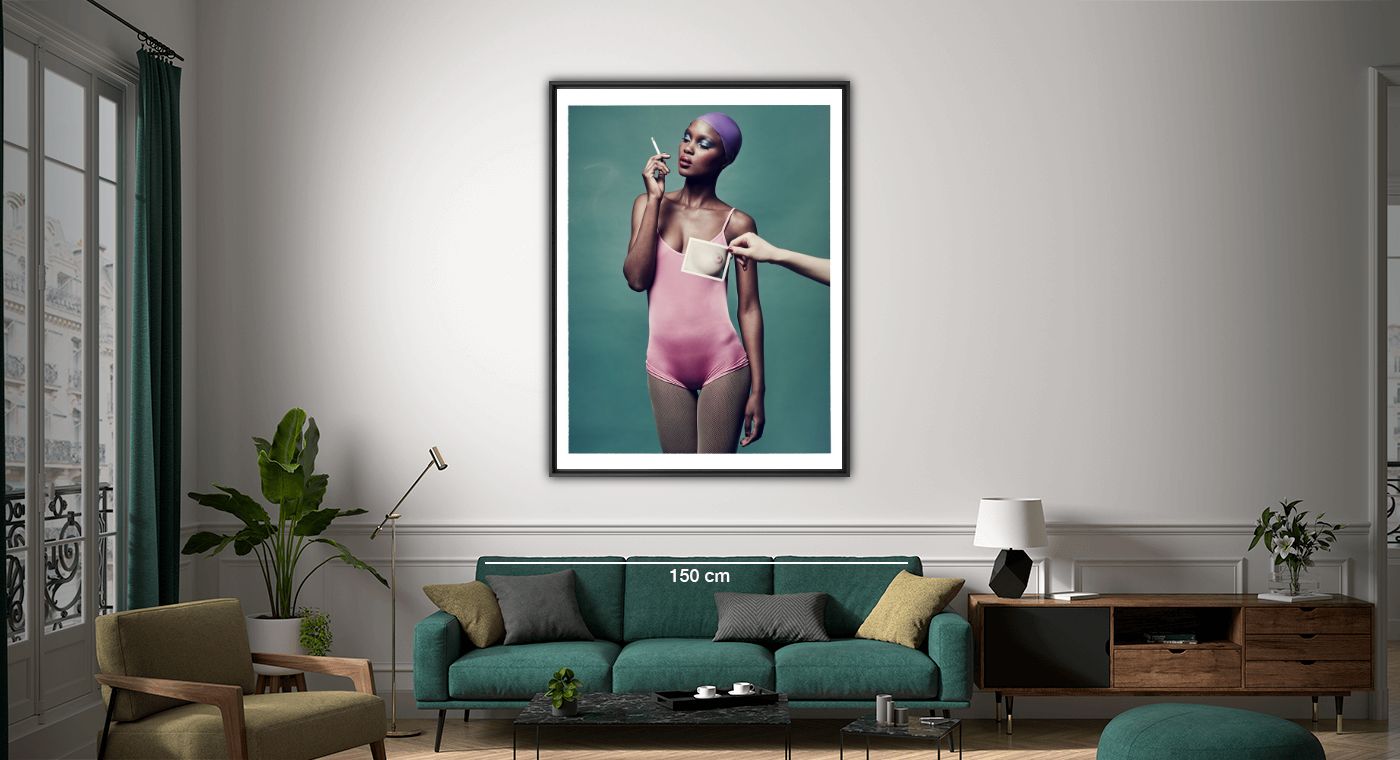

Populaire zoekopdrachten
Help
Nieuwe uitgaves Bekijk alles
v
YellowKorner presents our selection of key artists who continue to dazzle us with their talent. From Laurent Baheux to Bernhard Hartmann, Lee Jeffries, Ludwig Favre, Formento + Formento, or Mathieu Ricard, every one of them transports us into different worlds. Allow yourself to be immersed in the emotions of photographs brimming with history.
Laurent Baheux was attracted to journalism and editing at first, rapidly discovering a passion for wildlife photography. He has always been fascinated by Africa. From 2002, during a visit to Tanzania, he began personal work on its wild fauna.
From then on, he chose black and white with its play of shadows to immortalize rare and ephemeral natural scenes, constantly seeking to sublimate the animals , to capture the magnificence of their attitudes and the emotion of their gazes. His artistic career in black and white reached a turning point when he was nominated for the international Wildlife Photographer of the Year in 2007 in the “Creative Vision of Nature” category.
Through a stylized aesthetic approach that differs from traditional photography, Laurent Baheux magnifies the nature and wildlife he encounters, whether it be tigers, lions, giraffes, elephants or migrating birds.
Laurent Baheux works with Sony equipment. He uses three different cameras, which each correspond to a need: speed, details, and fast automatic focus.
Post-production is synonymous with for him long hours. He works slowly and needs to “digest” his images before developing them. In the development phase, he usually contents himself with touching up the contrasts, to obtain deep blacks. The photo is made at the moment of capture, not afterwards.
In the series Paradise Lost, Bernhard Hartmann focuses on forgotten gardens and moves away from magnificent interiors without spectators, revealing an open-air world. Bernhard Hartmann ’s melancholic images are once again the result of his frenetic, almost obsessional and poetic research, through which he immortalizes abandoned sites on his travels
. Here, nature gradually reclaims its stake, invading spaces that seem to have been forgotten by civilization. These sites brave all kinds of weather, welcoming silence after the sound of human voices have long since faded.
Born in the United Kingdom, Lee Jeffries lives in Manchester and constantly travels to major Western cities to meet people living in the streetsstreets , whose nobility he seeks to capture. Formerly an accountant, it was during a marathon he undertook in London that he crossed paths with a young woman snuggled in her sleeping bag near Leicester Square.
His perception of homeless people was radically transformed and Lee Jeffries couldn’t resist photographing her. This wonderful encounter marked the start of his artistic and social approach: the homeless became his sole subjects.
This humanist photographer explains that each image is the result of long discussions with each individual, a privileged moment that allows him to establish a connection that is particularly palpable in their gaze. “The emotion is in the eyes,” explains Lee Jeffries , whose majestic black and white portraits enable him to collect funds to assist and bear witness to the difficult living conditions of these isolated individuals, forgotten and worn down by a lifetime of suffering.
Buddhist monk and neurobiologist, Mathieu Ricard is also a photographer and author. He has shared the grandiose beauty of the Himalayan region with us for many years. Born in 1946, he travelled to India for the first time in 1967 and, on this occasion, met remarkable masters of the Buddhist Tibetan tradition.
After living in Tibet and Bhutan, he definitely moved to Nepal to the Séchèn Monastery and became the Dalai Lama’s French interpreter in 1989, helping him to maintain a continuous dialogue between East and West.
A life spent in this intimacy allowed him to capture, through his lens, the masters, the landscapes, and the populations of this isolated region of the world, whose magnificent portrait he paints.
Mathieu Ricard is the author of many photography books, including The Spirit of Tibet, Himalayan Buddhist, Tibet: Gazes of Compassion, An immobile journey, and Dancing Monks of Tibet and Bhutan: Land of Serenity. His photographs have been exhibited in New-York, Paris, Perpignan, Winterthur, Stockholm, and Hong-Kong.
Ludwig Favre is a lover of American landscapes, which he immortalizes poetically, in a timeless atmosphere.
A seasoned globetrotter, he sublimates the real through visuals with unique lighting and atmospheres. In this way, simple Californian beaches, urban views, and famous buildings are transformed into veritable works of art. His quest is to strike a balance between elements and find serenity in atmospheres, but also a lively dynamism, which develops in his pictorial framings.
Passionate about architecture, he focuses on immortalizing the vast landscapes of the United States. Particularly appreciating the low rays of the evening and morning, in the golden hours, the artist applies a somewhat nostalgic soft tonality to his photographs. In Southern California, Palm Springs – like a desert outpost – was also immortalized by R. Doisneau in 1960. This spectacular oasis of greenery is nestled into the hollow of the valley of Coachella, with its huge palm trees, wide rectilinear avenues, and mountainous backdrop.
That in a world where everything escapes us – time, life, death – contemplating and sharing the beauty of this earth is something essential. That’s what I strive for through my photos, to elicit an emotion, a feeling, a desire for voyages of discovery…
When I was younger, my father introduced me to photography and development in a dark room with chemical baths; I’d always been drawn to photography and the moving pictures of my childhood. I’ve always had the reflex of thinking about a place in terms of images, angles, or textures.
I was influenced by directors like Ridley Scott, Blade Runner for its colorimetry work, or Stanley Kubrick for films like A Clockwork Orange, 2001: A Space Odyssey or Full Metal Jacket and for his obsession with shots with a central perspective converging towards a vanishing point.
r
BJ and Richeille Formento met in 2005. Born in Hawaii, BJ arrived in New York in 1999. He was 35 years old and worked as an assistant to some of the greatest photographers such as Mary Ellen Mark, Hans Neleman, and Annie Leibovitz. Married three months after they first met, they joined forces, combining commercial and art photography. Owing to the recent economic crisis, the Formento duo have decided to create a more personal collection with Circumstance, a tragic-romantic filmic representation of time. The project is at once cynical and bewitching, exploring questions of identity and the transitory state of people and places. The initiative of the project was very sudden, although they took time to develop the concept.
In November 2009, the Formento couple decided to pack their bags, bringing their three Siamese cats along for the ride in an 8-metre-long silver Air Stream – the stereotypical, retro-futuristic US caravan. Then they zoomed off, like escapees, traversing the homeland of Uncle Sam in a kind of headlong rush, just as their models are doing in the portraits taken by Richeille. And so began an era: an epic, cross-country adventure novel. On a shoestring budget, their plan was clear: five months, twenty-five states, and fifty women. Their goal was not just to create photographs but to play with the fine line between mercantilism and art imbued with a greater social conscience.
Formento + Formento are famous for their romantic and elegant photographs that explore the themes of love, desire, and the burden of memory in desaturated filmic scenes. Their style reveals a fascination for atmosphere and texture – a strong sense of place is ever present.
From the United States, to Cuba, Mexico, India, or Japan, they combine a fervent passion for photography and cinema with an enduring love for others.
I don’t know if it’s unique, but photography has changed so much since the start of the digital age. Everyone is a photographer now. Falling in love with photography is one thing, falling in love with creating photographs is another, and both happened to us. I think that beauty is what happens when people who care about each other decide to do things together.
Because I’m no good at anything else! I can’t paint, I can’t draw, and my career as a singer never took off. Jokes aside, my father was an amateur photographer and took a ton of selfies from his fifteen years in the US Marines and some very beautiful vernacular portraits of my mother. So I very quickly realized the emotional value of photography, the way it connects people – this universal unspoken language – and especially the power that photography has to transport you into a whole different world. I love the power of this medium that sparks the imagination.
Edward Weston’s Daybooks, the diary of this major photographer of the twentieth century. For over fifteen years, Edward Weston kept a private diary in which he recorded his struggle to understand himself, his society, and his milieu. Rarely has an artist written so vividly, intimately, or sensitively about his life. Another big part of my world is the work of Duane Michals. Contemplative, confessional, and comical, the art of Duane Michals has a magnetic pull that transcends the conventional audience for photography. Since the early 1960s, Michals overcame what he considered the limits of the camera: he wrote in the margins of his prints, creating image sequences that explore intangible human dilemmas, and deriving poetic effects out of technical errors such as double exposures and blurred movement.
Tot uw dienst
Telefonisch op +44 203 608 7024 van maandag tot en met vrijdag van 9 tot 19.00 u of per e-mail
Aanmeldenr
Ruilen en retourneren
Ruilen & retour binnen 15 dagen
Onze garanties
Gratis thuisbezorging
Levering in een veilige verpakking
Levering
Beveiligde betaling
Veilig betalen via onze website, uw bankgegevens worden versleuteld



